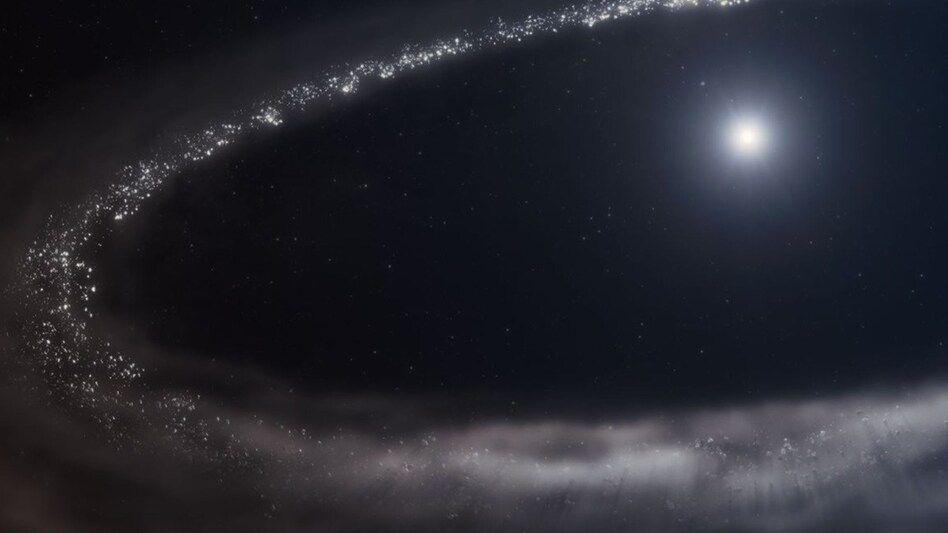 The ice identified by Webb is crystalline — similar in structure to the ice found in Saturn’s rings and the Kuiper Belt. (Photo: NASA)
The ice identified by Webb is crystalline — similar in structure to the ice found in Saturn’s rings and the Kuiper Belt. (Photo: NASA)
 The ice identified by Webb is crystalline — similar in structure to the ice found in Saturn’s rings and the Kuiper Belt. (Photo: NASA)
The ice identified by Webb is crystalline — similar in structure to the ice found in Saturn’s rings and the Kuiper Belt. (Photo: NASA)Crystalline water ice, shimmering like cosmic frost, has been definitively detected in a planet-forming region beyond our solar system. NASA’s James Webb Space Telescope has pinpointed this icy signature in the debris disk surrounding HD 181327 — a young, sun-like star located 160 light-years away. Published in Nature, this landmark discovery is the first unambiguous confirmation of frozen water in such a setting and sheds light on the universal mechanics of how planetary systems take shape.
Webb’s instruments captured detailed spectral data revealing both the presence and distribution of ice particles across the disk, offering fresh insights into the cold, dusty environments that precede planet birth.
The ice identified by Webb is crystalline — similar in structure to the ice found in Saturn’s rings and the Kuiper Belt. “Webb unambiguously detected not just water ice, but crystalline water ice, which is also found in locations like Saturn’s rings and icy bodies in our solar system’s Kuiper Belt,” said Chen Xie, lead author and assistant research scientist at Johns Hopkins University.
This structural similarity points to shared physical processes shaping debris disks, whether local or distant. The crystalline grains were formed from collisions between icy bodies within the disk — events that mirror the violent interactions believed to have sculpted our own early solar system.
At just 23 million years old, HD 181327 is a youthful, more massive, and hotter cousin of our 4.6-billion-year-old Sun. That heat plays a role in shaping the disk’s features. “HD 181327 is a very active system. There are regular, ongoing collisions in its debris disk,” Xie explained. These continual impacts supply a fresh layer of fine dust and ice detectable by Webb.
This churning environment is strikingly similar to our solar system’s Kuiper Belt, where icy collisions generate clouds of debris. In HD 181327’s disk, water ice is most abundant in the cold outer regions — where it comprises over 20% of the material, according to Xie. Moving inward, the amount of ice diminishes to around 8%, then nearly vanishes near the star due to intense ultraviolet radiation. Some ice may also remain locked within planetesimals — larger, undetectable bodies forming the seeds of future planets.
Water ice is more than just a remnant of cosmic collisions — it’s central to the formation of planets. “The presence of water ice helps facilitate planet formation,” Xie said. “Icy materials may also ultimately be ‘delivered’ to terrestrial planets that may form over a couple hundred million years in systems like this.”
The discovery underscores a hopeful truth: water, and potentially life, might not be unique to Earth. Crystalline water ice could be widespread across young planetary systems, making the conditions for habitability more common than previously thought.